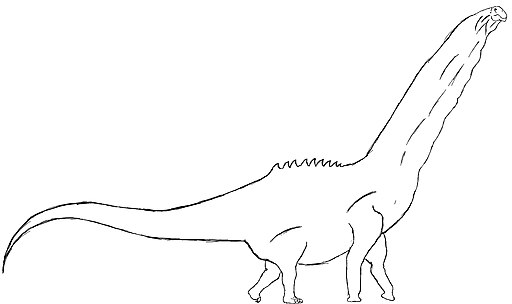Bruhathkayosaurus is a controversial and poorly documented genus of dinosaur that was purportedly one of the largest land animals to have ever lived.

| Meaning | Huge-bodied lizard [Bruhathkayo-saurus] |
| Pronunciation | broo-HATH-kah-yo-sore-us |
| When: | Late Cretaceous (about 70–66 million years ago) |
| Where: | Asia (India) |
| What: | Sauropod (titanosaurid, herbivorous) |
| Weight: | Highly speculative, potentially around 80–100 metric tons |
| Length: | Highly speculative, potentially around 28–34 meters (92–112 feet) |
| Diet: | Herbivorous (ate high vegetation) |
| Discovered: | First described by Yadagiri and Ayyasami in 1987 |
However, it is important to note that there is significant skepticism and debate within the paleontological community regarding its existence and size.
The name “Bruhathkayosaurus” translates to “huge-bodied lizard” in Sanskrit.
According to the limited information available, Bruhathkayosaurus was claimed to have lived during the Late Jurassic period, around 154 to 150 million years ago, in what is now India.
It was described as a massive sauropod dinosaur, potentially reaching lengths of about 35 to 40 meters (115 to 131 feet) and weighing up to 175 tons, which would make it larger than even the well-known Argentinosaurus and Sauroposeidon.
However, due to the lack of detailed and conclusive evidence, including incomplete fossils and absence of peer-reviewed studies, many paleontologists remain skeptical about the existence and size estimates of Bruhathkayosaurus.
Further research and discoveries are necessary to clarify its true status and provide more accurate information about this enigmatic dinosaur.
